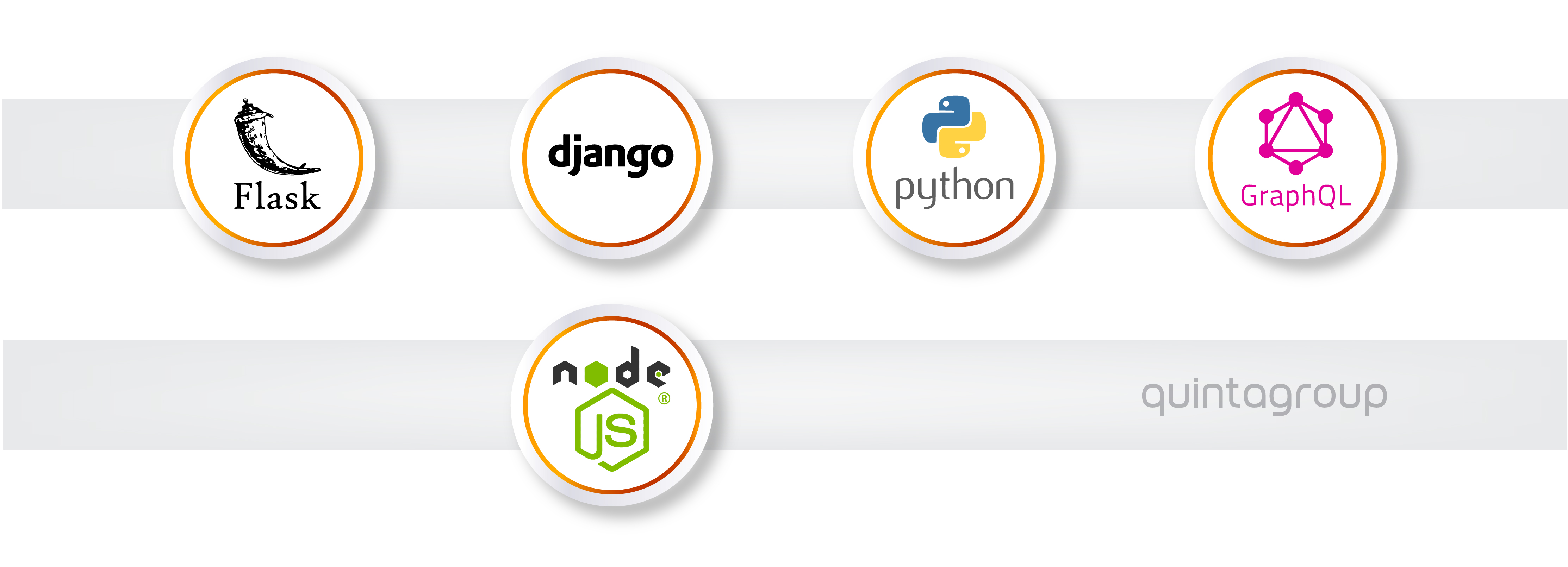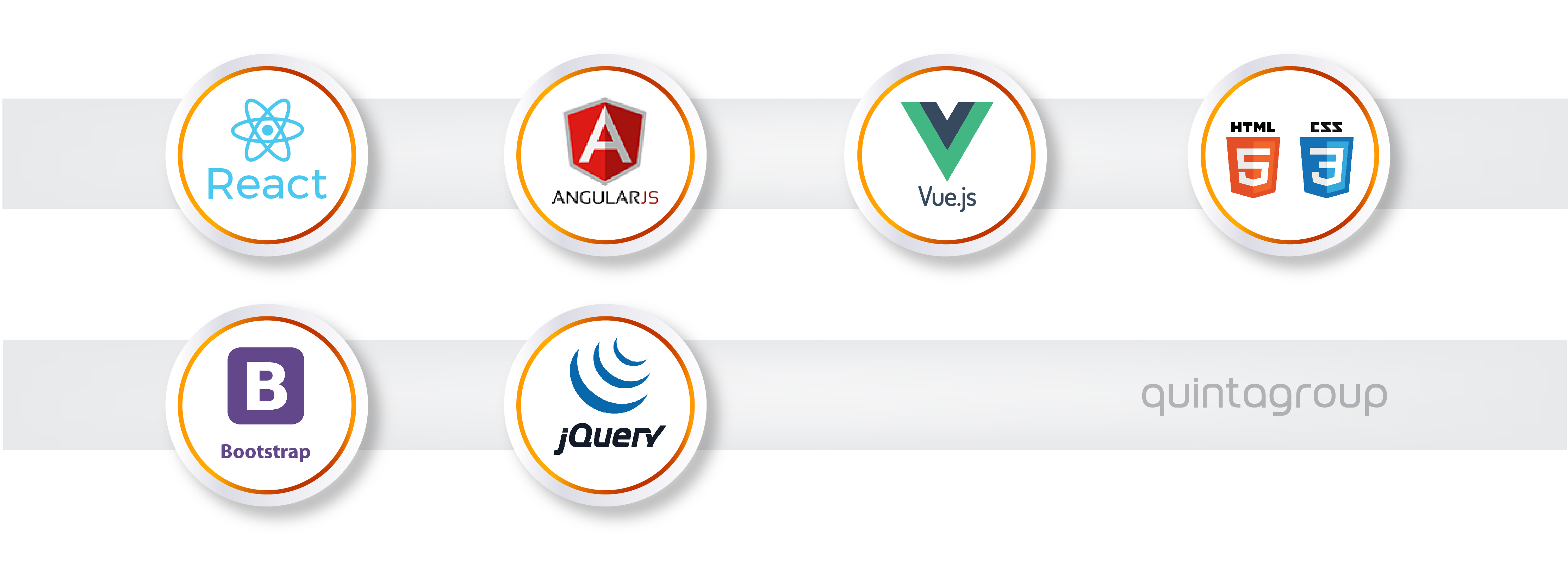Headless apps are continuously gaining popularity in the e-commerce business. A lot of successful companies are now building these apps and they have proven to be crucial in e-commerce development. But first, what are headless apps? A headless application is an API-driven application that has an architecture that detaches the backend and complex functionality. It’s like chopping the head (frontend) from the body (backend), and this is where the term “headless” has come from.
Headless e-commerce architecture itself is created for the IoT age, meaning that headless apps are the future of e-commerce. We can also say that headless apps boosted a lot of businesses to higher levels! Sounds interesting? Let’s talk more about that and compare Python with JavaScript for your headless e-commerce apps and GraphQL with REST for your API.
Why make your apps headless?
In a nutshell, in headless apps, your frontend and backend are separated and interact through API. Therefore, the content exists apart from each other and you can access it by using API calls. What’s more, headless apps deliver positive experiences to both users and admins. Besides, using headless e-commerce architecture with a detached frontend and backend will make you remain competitive in the market and give your customers what they want more quickly. The headless system also can support new technologies when they appear, which is very helpful, and that can’t be said about traditional commerce.
So, let’s stop dilly-dallying and go straight to the advantages of using headless apps over traditional ones.
- Scalability - because of the frontend/backend separation you can effortlessly deploy rapid updates and customize your frontend at any time without jeopardizing your performance
- Flexibility - headless architecture is believed to be more flexible with more freedom of choice on the frontend while the traditional one is considered quite restrictive
- Multiple platforms service - with headless apps you can deliver your content across different platforms from only one backend
- UX boost - headless apps boost user experience because the developers innovate as much as they want without re-implementing the entire existing system
These benefits will fit perfectly with your projects if you want your digital assets to have the best performance, plan to keep several touchpoints with your customers, run a modernized tech stack that helps manage and deliver digital assets, hold an integrated control over displaying your content across different platforms, or let your developers implement more freely in the frontend.
Python vs JavaScript for your apps in e-commerce development
Python and JavaScript are among the most popular programming languages out there and are both widely used for web development. JavaScript is a scripting language, meaning that it gives instructions for browsers to execute. Meanwhile, Python is an object-oriented programming language, which means that it works with building blocks (objects).
Backend

For the backend, Python is out there for development for 30 years; as for JavaScript, it has existed for 26 years, but it is receiving vast popularity for the last 11 years, thanks to the appearance of NodeJS. The advantage of Python here is that it allows developers to build objects, make them perform actions, or assign attributes to them. Data science can be performed using both of these languages, however, Python is more suitable for this as it offers more built-in-functions and data science packages, requires less time for performing data science tasks, and has more tips and how-to tutorials for developers. Both Python and JavaScript have good libraries, but Python’s ones are more extensive. One more important thing to consider is when you choose Python for your e-commerce development, you choose security. Python provides your apps with a robust and highly secure backend; moreover, Python-backed apps will be more resilient to cyber-attacks.
Frontend

As for the frontend, JavaScript has got the upper hand here. JavaScript frontend can be used for developing creative and dynamic user interfaces and is highly adaptable. It is hard for Python to match such features in the frontend.
Sometimes users confuse an administration dashboard with the backend. But these are not the same! To make it clear, the administration dashboard, where a user adds goods in the shop, manages them, or has a dashboard with numbers, has a frontend (on a JS framework) and a backend (on Python or NodeJS) as well.
So what’s the solution? The best approach here is to use Python for the backend (Django, Flask, and GraphQL) and JavaScript for the frontend (React, VueJS, and Angular) for building strong applications with successful performance.
Using Python and its frameworks for the backend is our priority approach to headless apps for e-commerce. Our vast experience will help us generate a perfect solution for you with a customized frontend and backend, so why don’t you try it out?
GraphQL API vs REST API for e-commerce apps
A headless e-commerce solution must have an API that improves integrations and communications with other platforms. As for a query language for handling APIs, there is a divergence between well-known REST API and slightly newer GraphQL API. Both of these languages will serve well for your e-commerce development, but let us tell you about the advantages of GraphQL over REST. As you probably know, the main difference between these two languages is that with GraphQL you need to do one API call for retrieving various information at once, while with REST you have to make multiple API calls - one call per each request. A simple example is an online shop. If you want to display product information, which includes a product name, price, and description, you will make 3 API calls with REST, when with GraphQL you will make 1 API call “product information”, and all 3 components will be displayed. So it simply saves your time, effort, and doesn’t overload your network with many API calls. But don’t get us wrong, we work with both REST and GraphQL and will implement whichever you think is more suitable for your business.
Python and GraphQL work well together, as Python presents 4 reliable libraries (Graphene, Ariadne, Tartiflette, and Strawberry) and 3 GraphQL Python clients (python-graphql-client, GQL, and sgqlc).
Saleor headless e-commerce platform
Here is a good example of headless architecture, Python, and GraphQL combined in e-commerce development. Based on Python and Django, powered by a GraphQL API on the frontend, Saleor is a GraphQL-first headless e-commerce platform that gives personalized, fast, and dynamic shopping experiences. It is considered the world’s quickest expanding open-source e-commerce platform. Saleor brings interesting features:
- Built-in SEO support
- Automated localized pricing
- Intuitive admin dashboard packed with cool features
- Optimization for cloud deployments
- Huge extendability
The performance is top-notch, given credit to GraphQL API, modern experiences can be offered across any device, thanks to headless architecture, and Saleor is highly secure, owing to Python on the server-side. A good solution, isn’t it?
Headless Python GraphQL apps in your e-commerce business
Developing strong and successful e-commerce solutions and great multi-vendor marketplaces have been our specialty for almost 6 years. Headless apps are the future of e-commerce, so don’t fall behind! Whether you want to use Python and GraphQL for your apps or other languages, our creative and skillful developers will make it happen. Of course, our recommendations don’t end here! For an extensive consultation, click here, and let’s create robust and prosperous applications together.
